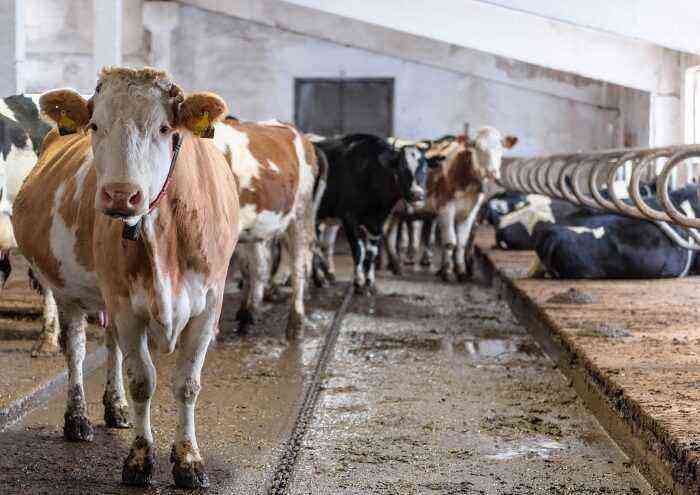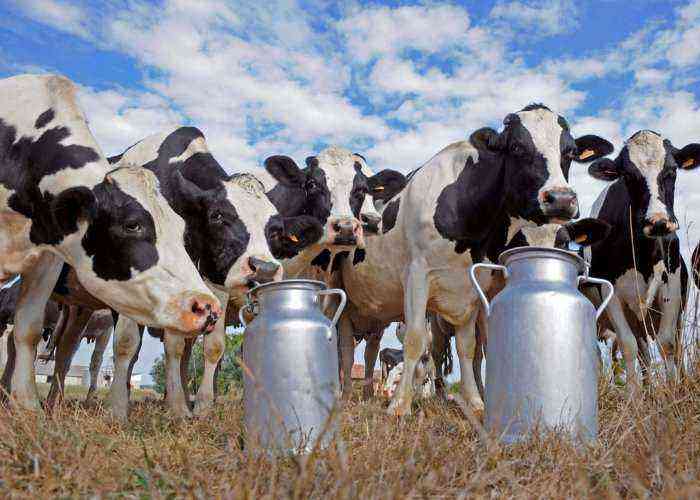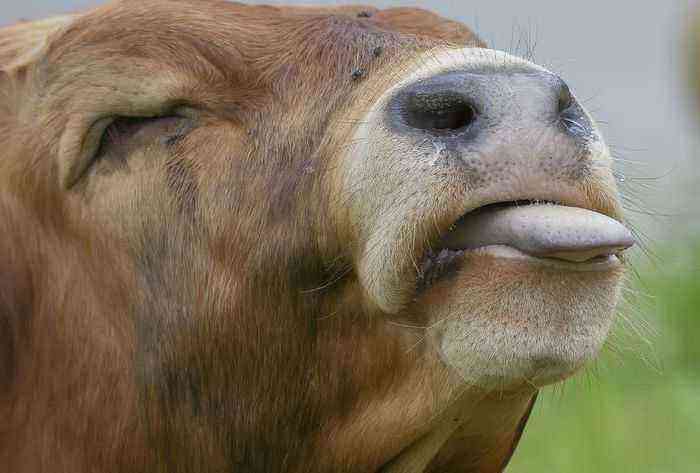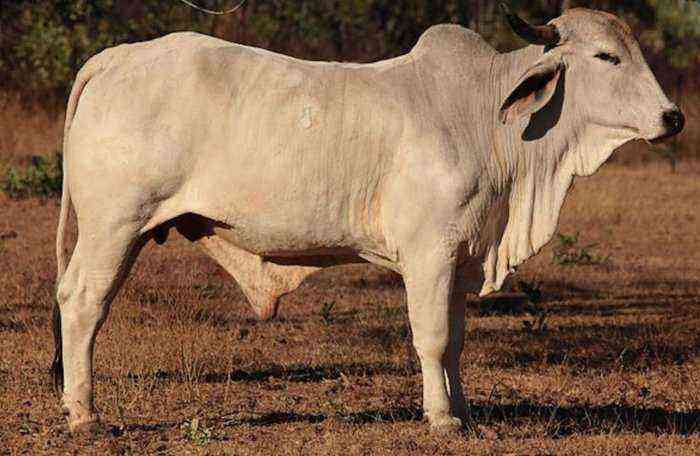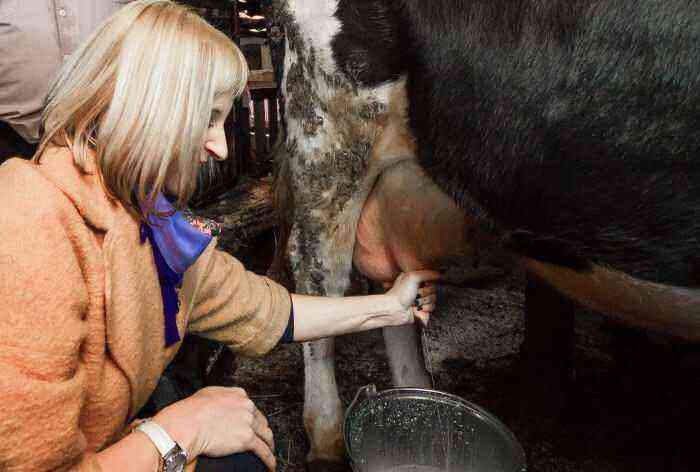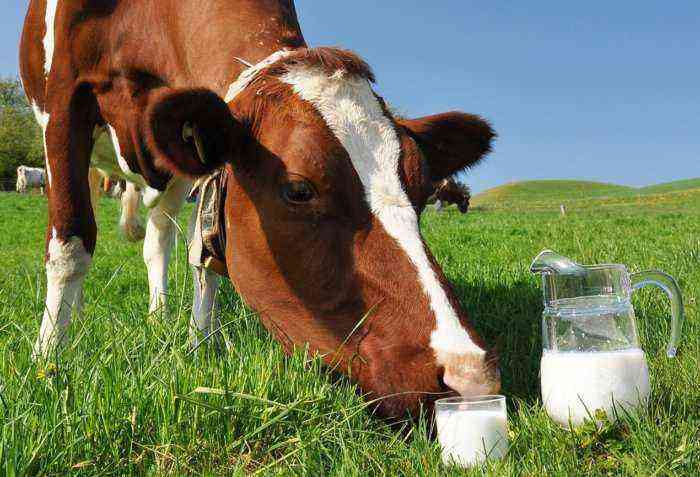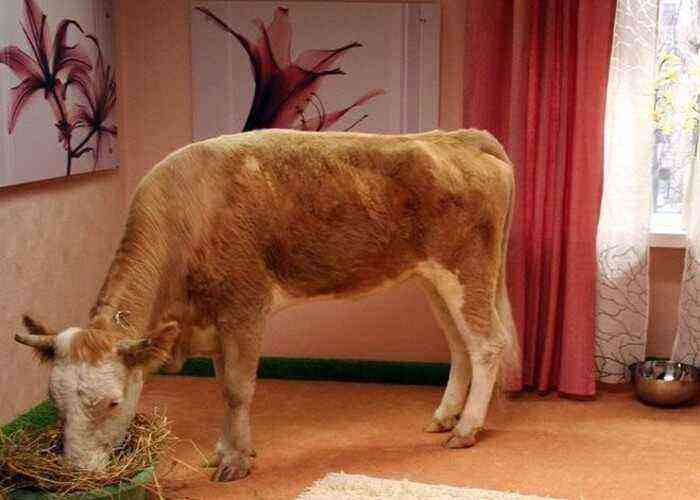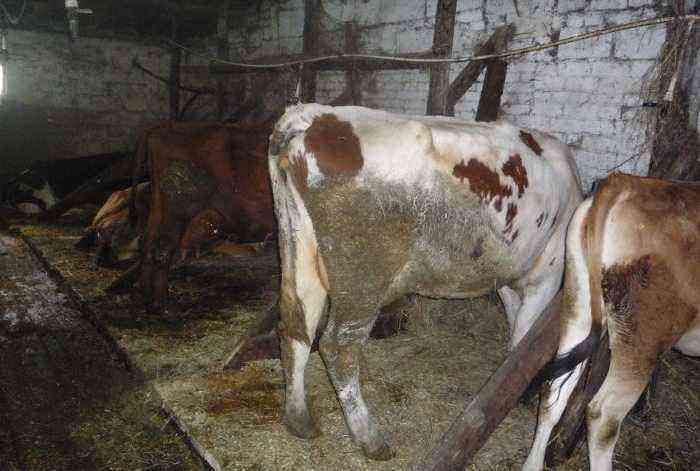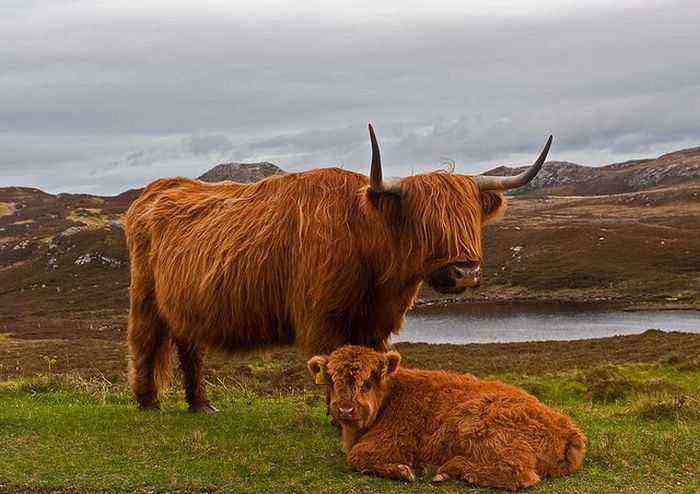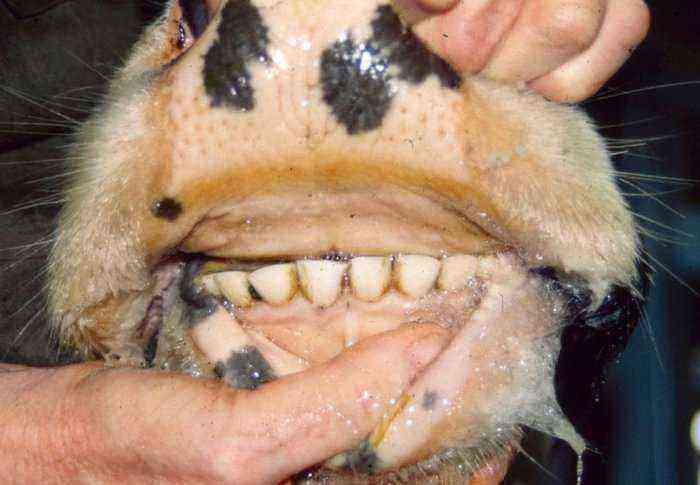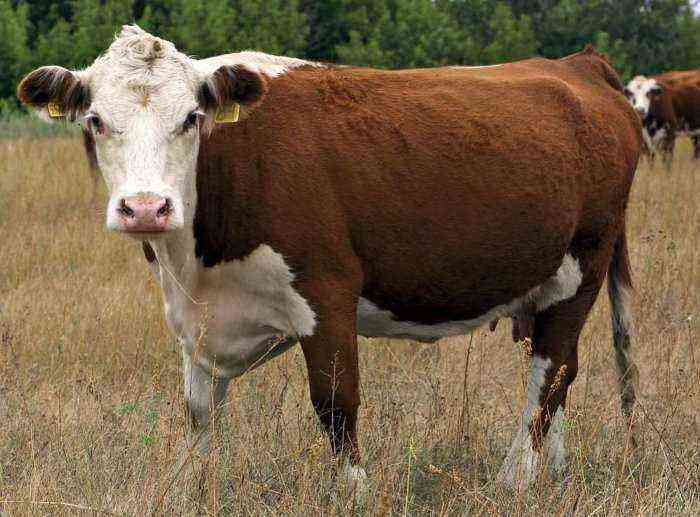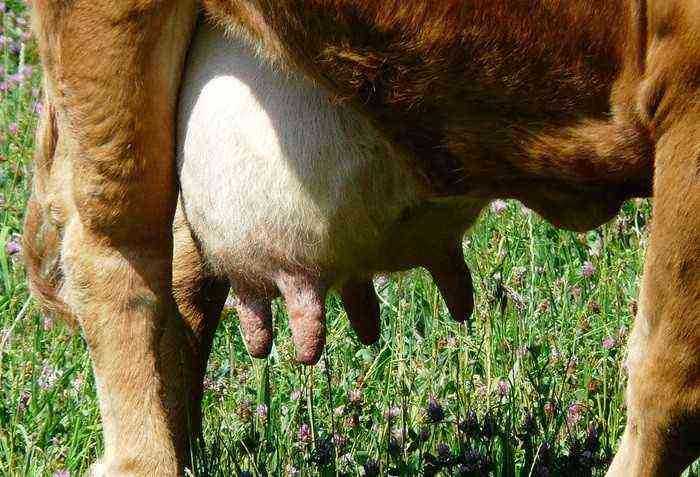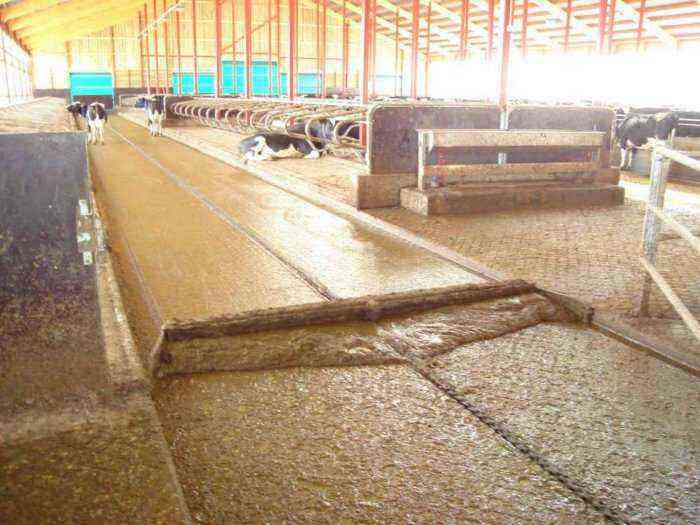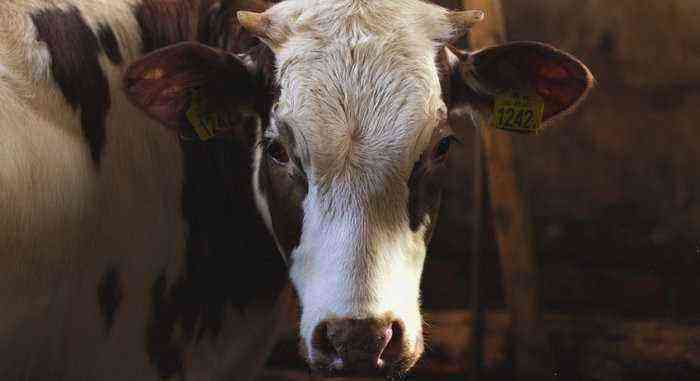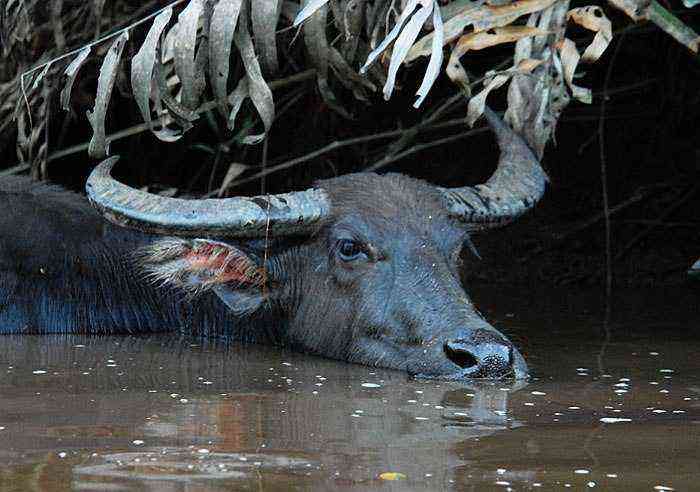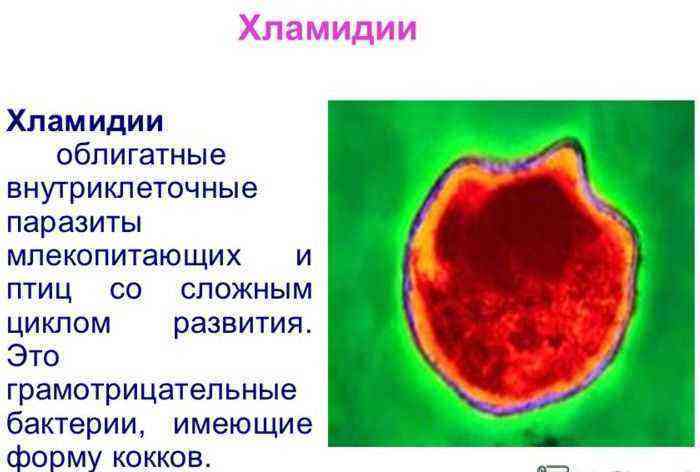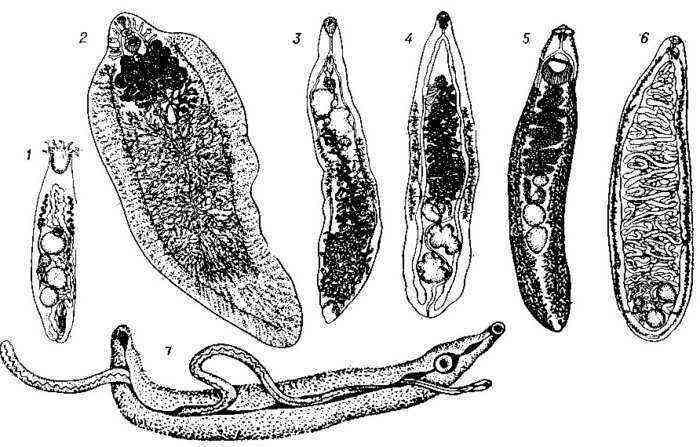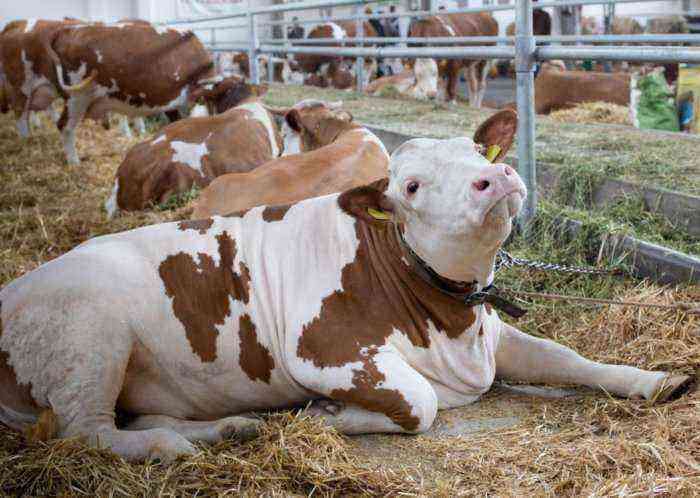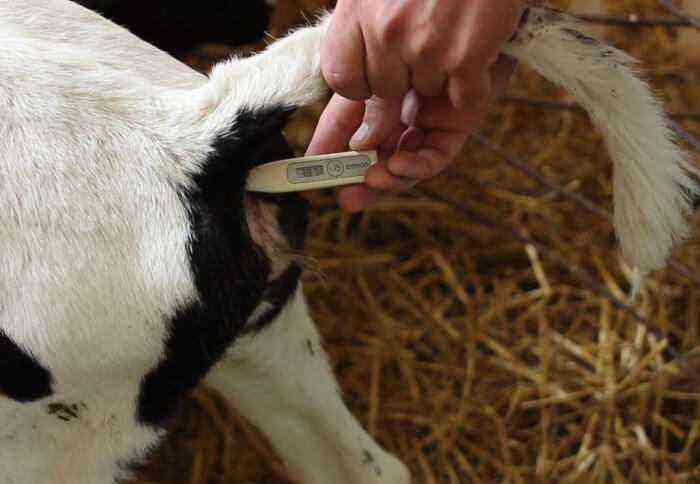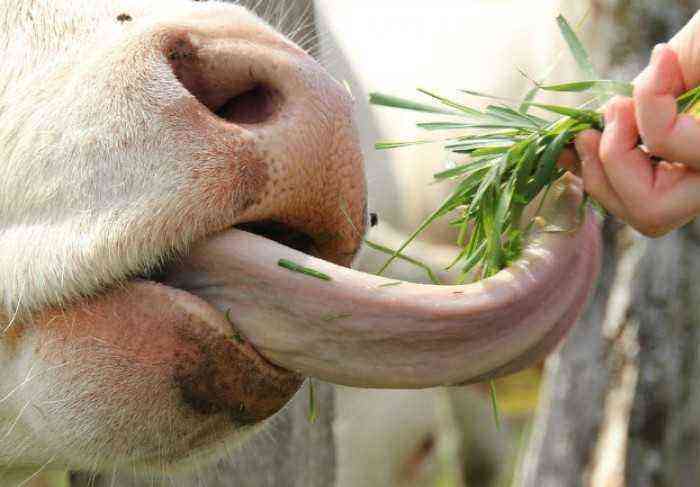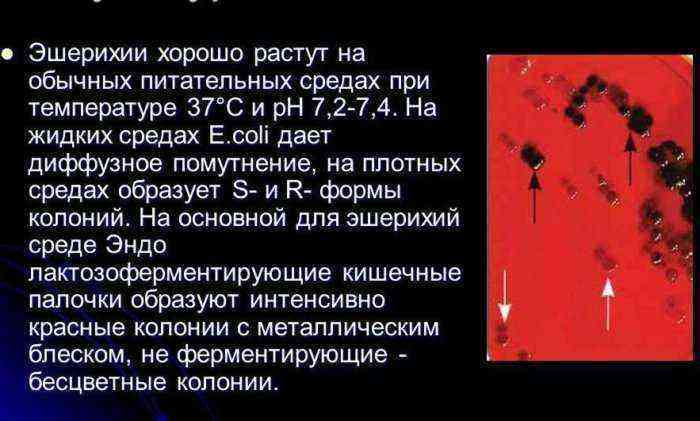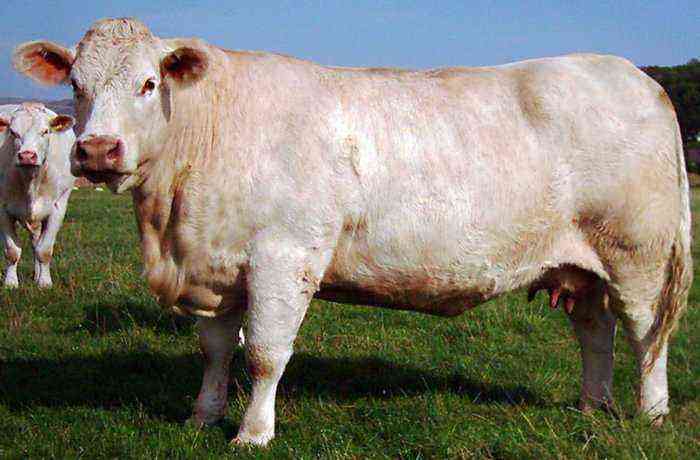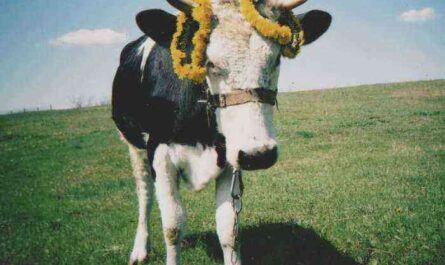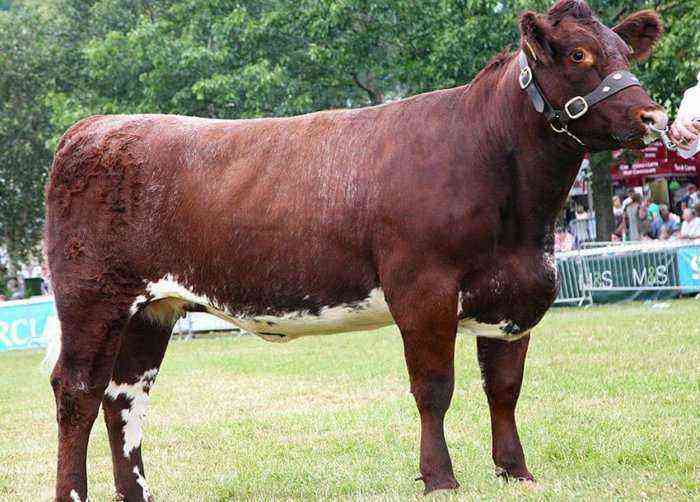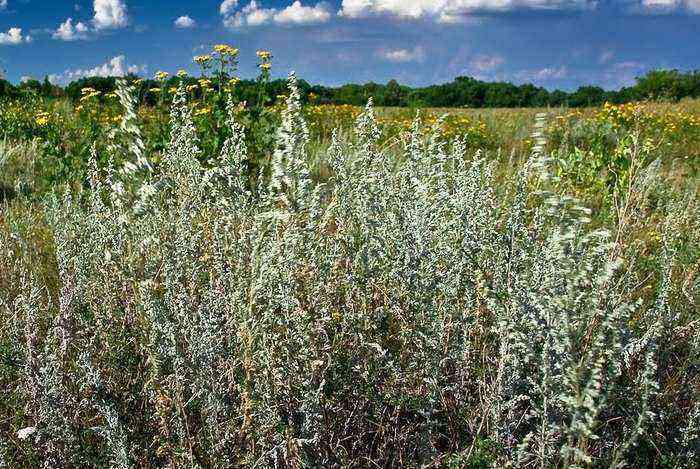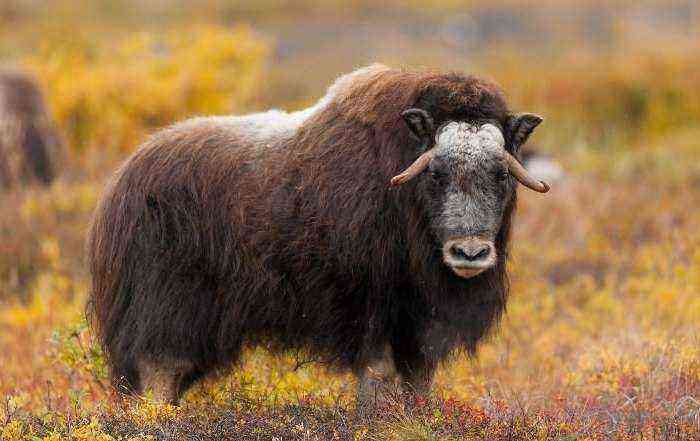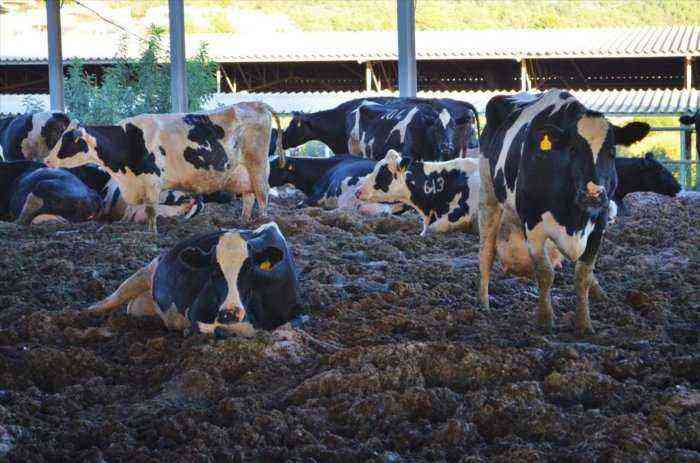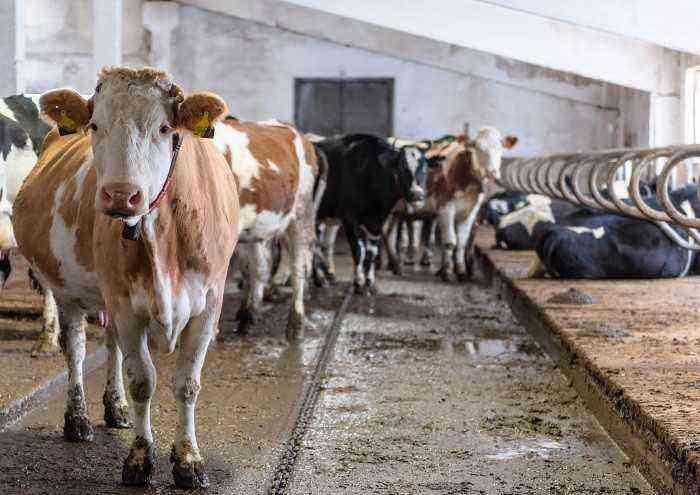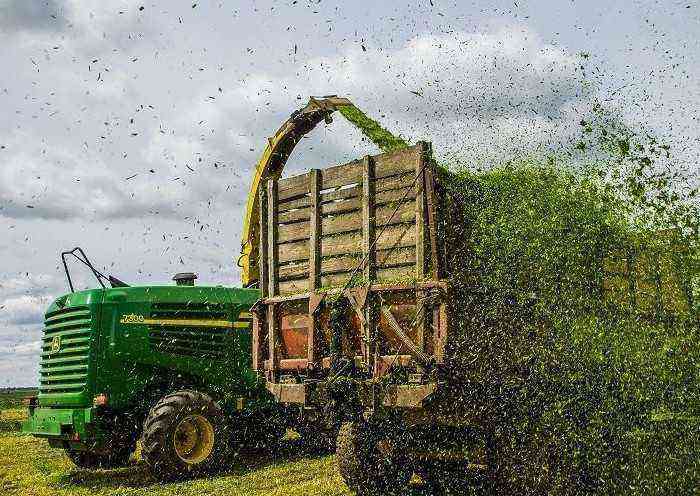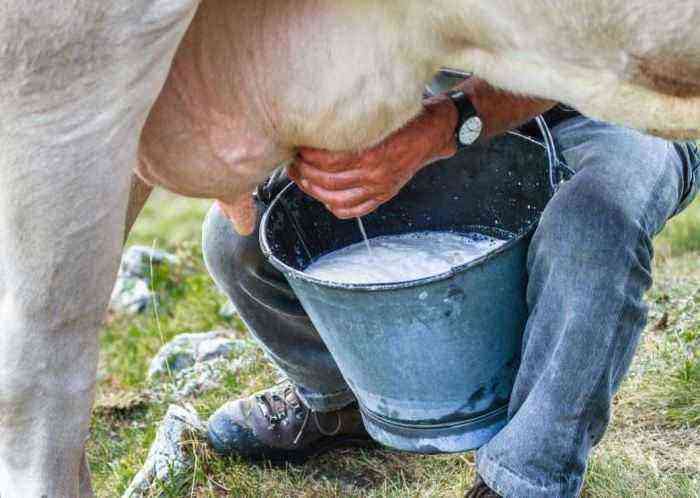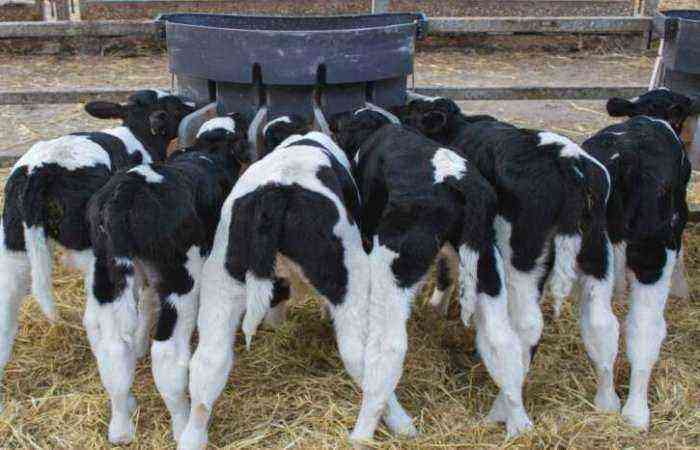The expansion of the herd through the calving of an adult cow is a desirable event for any cattle breeder. But many of them make a big mistake, paying all attention to the newborn offspring and thereby forgetting about proper care for the calving animal. But the productivity of a cow for the entire future lactation season directly depends on its quality and proper milking. Knowing how to properly milk a heifer, farmers not only increase the milk productivity of their farm, but also contribute to the health of the animal.
Distribute first-calf heifers
How to milk a heifer?
The milking of the cow is extremely important. With the correct implementation of this process, the overall productivity of the animal can be increased by 20-30%. Also, how the breeder takes care of the cow during milking depends on her general health and disease resistance. And since for an animal that has calved for the first time, childbirth is a serious stress, well-designed distribution of first-calf heifers should be paramount.
This procedure includes the following points:
- strict observance of the established daily routine;
- properly planned balanced diet, including advanced nutrition;
- adherence to a clear milking procedure, including preliminary udder massage;
- ensuring proper sanitary standards and rules for keeping livestock.
Each of these points has its own set of nuances.
Machine milking
Milking a first-calf cow with the help of technical devices is used, as a rule, at large cattle breeding enterprises, where it is extremely difficult to milk all the livestock manually. Modern milking machines involve the selection of milk from four udder teats at once or alternately in pairs. In this case, one should adhere to the correct work algorithm, which has the following form:
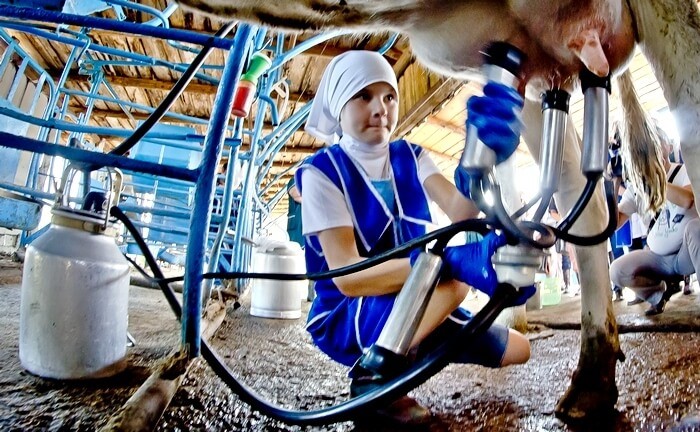
Milking a first-calf cow with a machine
- Thoroughly wash the cow’s udder, clean it of dirt, and dry it with a napkin. Carry out a preliminary massage of the mammary gland, after which milk a couple of streams of milk.
- Check the working condition of the milking machine and connect the cups to the teats. Previously, these elements of the device are heated in a container with warm water.
- During the entire milking, the operator must constantly monitor the milk flow in order to prevent overexposure of the machine. This process, as a rule, lasts no more than 6-7 minutes.
- After removing the cups, manual milking and a final udder massage should be carried out for some time.
When milking a first-calf cow, machine milking can be carried out no earlier than 20 days after calving. Moreover, only those animals that have no serious injuries, cracks, warts, signs of infectious and parasitic diseases on the udder are allowed to it.
hand milking
Manual milking of first-calf heifers also involves a number of its moments. A still non-calving animal should be taught to touch two months before calving. In the first days after childbirth, milking should be carried out from 3 to 5 times a day. In addition, each such procedure is preceded by a thorough cleaning of the udder and massage, which lasts a couple of minutes.
Multiple milking can be replaced by less frequent repetition, but for this, an additional one is carried out 1,5 hours after the main milking. You can switch to permanent three-time milking when the cow gives no more than 10 liters of milk per day.
As for the milking technique, it is better to milk the first-calf heifers with a fist. This will reduce the risk of injury to the udder. The crushing is carried out in the following way:
- The palm is perpendicular to the nipple.
- The index finger and thumb cover the nipple at the base, after which the remaining fingers squeeze around it.
- The milk is squeezed out with a gentle downward movement.
- The palm is unclenched, and the procedure is repeated again.
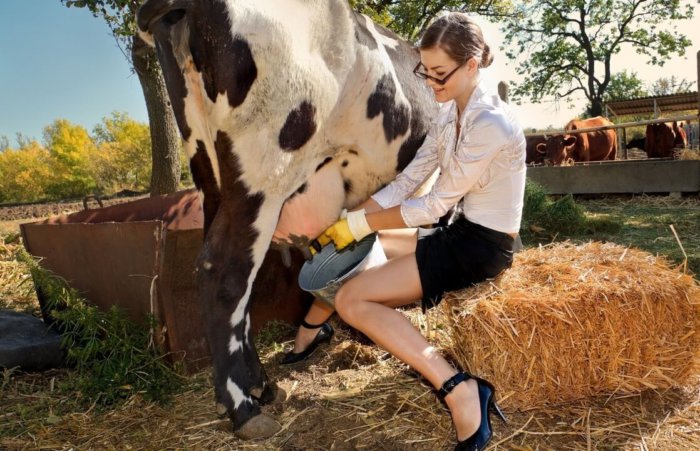
Manual milking of heifers
Milking rules
During milking, a number of instructions should be strictly followed, which will ensure large milk yields and help not injure the animal’s udder. These main points include the following:
- Milking should always be done at the same time. This will teach the cow’s body to produce the most milk by the specified hour.
- Before the procedure itself and after it, a massage is necessarily carried out.
- Milking begins with slow smooth movements, followed by an increase in pace and intensity (if necessary).
- The accumulated milk must be milked out completely. This will provoke the animal to milk production and prevent many diseases.
- At the end of the procedure, it is advisable to lubricate the nipples and udder with petroleum jelly to prevent cracks and loss of elasticity.
Milking training
It should be noted that during the first milking it is important to properly accustom the animal to this procedure. To do this, even 2-3 months before calving, during the daily cleaning of the cow, they feel and lightly massage the udder, wash it from dirt. This gradually gives the heifer the feeling that she is safe and can feel comfortable around the person.
The first time after childbirth, due to the large accumulation of milk, milking should be carried out at least 5 times a day. Gradually, the number of approaches can be reduced to 4. And already a week after calving, the animal must be transferred to three times milking at a strictly specified time.

milking cows
If the cow struggles during milking, an ordinary piece of cloth moistened with warm water helps in accustoming the first-calf heifer. It is placed on the withers of the cow before milking. It gives the animal the opportunity to relax, makes it more obedient, prevents kicking. In addition, with this procedure, the cow is more willing to give milk.
Udder massage
Udder massage is an extremely important moment in milking. It allows you to increase blood circulation in the organs of milk formation, make the tight udder more elastic after calving, and increase milk flow. In addition, this procedure also affects the quality of the dairy product, making it more fatty.
The whole massage process is divided into two stages:
- Preliminary, preparing the udder for milking.
- The final one, which allows you to put the udder in order and avoid injuries and cracks. In addition, it makes it possible to milk the heifer.
Both procedures are preceded by a thorough washing of the udder with warm water, after which it is wiped dry with a clean cloth or napkin.
It is also worth noting that this organ consists of 4 separate lobes, each of which involves its own nipple. This means that you need to carefully massage each of them. To do this, the hands are located on opposite sides of a certain share. The technique itself includes two types of movements:
- Stroking the udder with a little pressure. Movement is from top to bottom.
- Raising the organ with two palms up. Such a procedure is perceived by the cow at the level of instincts as the natural movements of the calf, which leads to relaxation and greater milk flow. The process is repeated 3-4 times.
The nipple massage deserves special attention. It is carried out by the same movements as milking. The only difference is that no effort is put on the nipples, which eliminates the pumping of milk.
Feeding at break
After calving, cows are especially sensitive to the composition and quantity of feed. That is why the diet for the period of milking should be selected especially carefully. As a rule, advance feeding is implemented at this stage of lactation. It lies in the fact that in addition to the standard rate necessary to ensure the actual milk yield of the animal, 2-3 additional energy feed units are added to its food. These are the ones that lead to higher productivity.
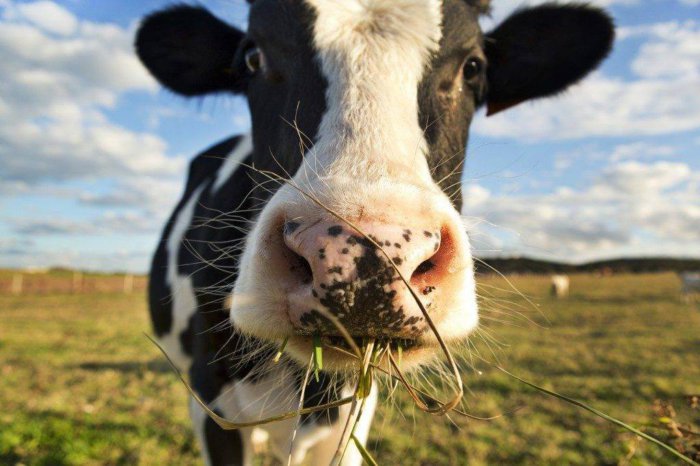
cow feeding
This addition to the basic diet can be provided by increasing the amount of concentrated feed and beets fed. The total percentage of concentrates in the diet for the milking period is:
- for low and medium productive animals – at least 40%;
- for highly productive – over 50%.
It is also extremely important to provide the animal with a large amount of protein. It can be introduced into food at the expense of individual concentrates, bean hay, food additives (PMVD). In the summer, it is also advisable to add dried grass to your food.
The reinforced diet is prescribed to the animal for approximately 100 days. The transition to a new type of feeding is carried out gradually, starting from the 10th day after calving. As soon as the milk production ceases to meet the volumes of concentrates and beets consumed, the diet is gradually brought back to normal.
Important! An effective way to improve the health and overall milk production of a cow during milking is to introduce vitamin and mineral supplements into the diet. Water the animal should be warm water 3 times a day. And the amount of drinking should not be limited.
Conclusion
Properly organized milking of a first-calf heifer makes it possible to increase its annual milk production by 20% or more. In addition, the nature of all subsequent lactations largely depends on the quality of the implementation of this process. Therefore, this stage of the life of livestock should be given special attention, adhering to the indicated advice in feeding and handling the animal.
